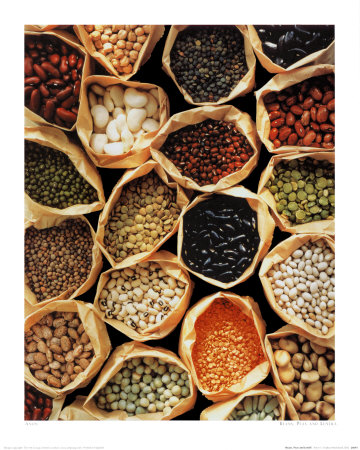Health Tips Lentils Nutritional Benefits
Welcome, Guest. Please login or register.
Aug
20
Health Tips Lentils Nutritional Benefits
Health Tips Lentils Nutritional Benefits
Lentils and beans are two commonly ignored foods that have a lot of health benefits. They're beneficial for people who have or are in danger of developing diabetes. They also provide anti-aging benefits, are heart-healthy, and can be cooked in a lot of different ways. If you're wondering what you should eat to have a healthy diet, the answer surprisingly enough, is beans.
Most varieties of beans and lentils are very low in fat. Soybeans are the only exception. People who are watching their weight may wish to pay attention to their intake of this type of bean, but can eat others without worry. Beans and other legumes also offer complex carbohydrates, which we need to power our bodies, and plenty of dietary fiber - around fifteen grams per cup, which is half the 25 grams we should eat every day. They also contain essential fatty acids (omega-6s, and in the case of soybeans, omega-3s). Combine beans or lentils with grains like barley, oats, and rice, and complete proteins are formed, making them a good source of this vital nutrient for people who should avoid meat or choose not to eat it.
Reasons to consume Lentils
High in Fiber
High in Protein
Low Glycemic Index
High in Folate
Antioxidants
Fiber-rich foods tend to contain various types of fiber. Peas, lentils, and chickpeas contain both soluble and insoluble fiber. Insoluble fiber aids digestion and adds bulk to stool, hastening the passage of fecal material through the gut, thus helping to prevent or alleviate constipation. Fiber also may help reduce the risk of diverticulosis, a condition in which small pouches form in the colon wall (usually from the pressure of straining during bowel movements). People who already have diverticulosis often find that increased fiber consumption can alleviate symptoms, which include constipation and/or diarrhea, abdominal pain, flatulence, and mucus or blood in the stool. Because insoluble fiber is indigestible and passes through the body virtually intact, it provides few calories. And since the digestive tract can handle only so much bulk at a time, fiber-rich foods are more filling than other foods--so people tend to eat less.

Dry peas, lentils, and chickpeas are protein rich foods, meaning they provide the body with all eight of the essential amino acids for humans
Glycemic Index is the ranking scale of carbohydrate-rich foods based on their immediate effect on blood glucose-or blood sugar levels compared to glucose or white bread. Carbohydrate foods that break down quickly during digestion have a high glycemic index (index of 67 or higher). Their blood sugar response is fast and high. Carbohydrates that do not break down slowly or complex carbohydrates, releasing glucose gradually into the blood stream, have low glycemic index values (index of 55 or lower). Peas, lentils, and chickpeas are full of complex carbohydrates that release energy slowly to the body. This helps to maintain a consistent energy level. In contrast, sugars are broken down quickly within the body, causing it to "crash" or feel tired after the sugar has been used. By consuming foods with a low glycemic index, you can…
Control your blood glucose levels
Control your cholesterol levels
Control your appetite
Lower your risk of getting heart disease
Lower your risk of getting type 2 diabetes
Lentils, split peas, and chickpeas are good sources of important minerals like iron, magnesium, and zinc. Iron deficiency causes anemia while zinc is one of several nutrients necessary for fending off infections. Consumption of too many refined grains and cereals, and not enough fresh fruits, vegetables, nuts, and seeds is likely to amount to a diet low in magnesium. Scientists think this may cause blood pressure to rise.
Peas, lentils, and chickpeas provide antioxidants such as Vitamin A and Vitamin C which bind with and destroy free radicals, reducing oxidative damage to cells.The presence of phytochemicals in legumes is another reason why we should eat legumes regularly. Plants use phytochemicals to protect themselves from insects, disease, drought, and radiation. The body uses phytochemicals to fend off disease. Lentils, especially have a high content of tannins, phytochemicals that prevent cancer growth, making them a good addition to any diet.
Lentils, like all pulses, are high in fiber which makes them a good protector against bowel cancer. They are an excellent source of protein when combined with rice or wholegrains. Lentils are an important source of B vitamins, especially B3, which is essential for both a healthy nervous system and digestive system. They are high in iron, zinc and calcium and are a good replacement for red meat. Like meat, the iron in lentils is better absorbed when they are eaten with a good source of vitamin C like leafy green vegetables.
Calories in Lentils:
1 cup cooked = 230 calories